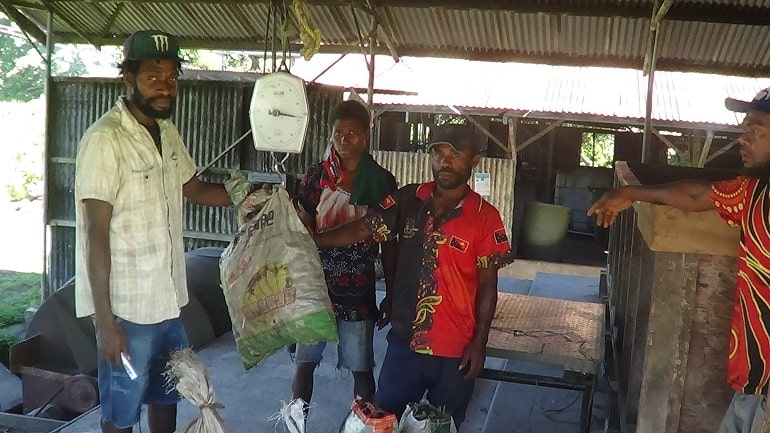Eddie Robin is a farmer from Kamanakam Ward of Inland Baining LLG in East New Britain is now enjoying benefits of an emerging galip nut market.
Galip, Canarium indicum has been growing in his area for over 40 years. Mr Robin recently sold 151 kilograms of fresh galip nuts at Kerevat. Galip trees grow up to 30 metres high and not only provide a form of income but provide other benefits as food, timber and firewood. They are also planted as shade for cocoa.
After the galip is harvested, mothers and children would crack the nut with stones, then eat the raw kernels or string them with coconut sticks and grill them over the fire. When there is surplus, the dried nuts are stored in bush rope-woven bilums. The nuts are found in local markets, both as fresh and dried nuts. They are highly valued and also given as gifts to visiting relatives. Galip trees are also reported to have medicinal properties when the bark of young trees is scraped, wrapped with leaves and heated over the fire to heal bruises, sores and body aches.
The transition from a humble nut with traditional ways of preparation, to a packaged galip product is a positive new opportunity for farmers like Mr Robin from inland Baining, who now have a larger market for their nuts.
This humble nut is not only a delicacy in Gazelle but also in many areas of PNG. Research and development of the potential for this new product has been increasing over the past 20 years. The current research program, run jointly by NARI, Griffith’s University in Brisbane, and the University of Adelaide, is focusing on the commercial aspects to support private entrepreneurs.
As an emerging crop in the market, the galip nut would continue to bring positive benefits to farmers like Robin mainly in East New Britain and potential for scaling out to other provinces in the near future.




